Marketing DefinitionDefinition and History of MarketingThe involvement in developing, providing, promoting, and trading valuable products and services to consumers, clients, and society is known as marketing. It entails developing, advertising, marketing, and distributing a good or service. To ultimately increase sales, marketing seeks to understand and satisfy the requirements and desires of a target market. 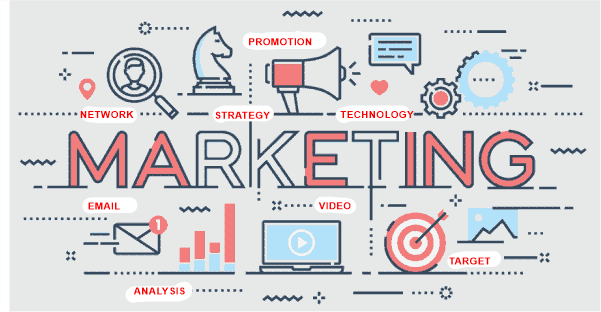
The origins of marketing can be seen in early societies when individuals traded commodities and services. But the idea of modern marketing was formed in the late 19th and early 20th centuries. Companies then started utilizing various strategies to promote their products as they started to recognize the value of selling to a larger audience. Print advertising was one of the earliest types of modern marketing, and it initially appeared in the late 19th century, along with the rise of mass-produced consumer products. The development of radio advertising in the 1920s and the emergence of television advertising in the 1950s were the events that came after this. Marketing strategies evolved along with technology. Online advertising, email marketing, and social media marketing are just a few of the new types of marketing that emerged due to the development of the Internet in the late 20th and early 21st centuries. The reach and impact of marketing have significantly increased thanks to these digital marketing strategies, enabling businesses to engage with consumers in fresh and creative ways. Market research and analysis are also a part of marketing, which helps businesses better understand the requirements and preferences of their target market. The consumer experience is enhanced overall, and more successful marketing strategies are created using this data. Over the past century, marketing has undergone substantial change, which is still occurring as new technology and consumer behaviors are introduced. Today, marketing is crucial to a company's success because it enables them to connect with customers, increase brand recognition, and boost sales. Marketing MixThe marketing mix is a central idea in marketing that denotes the four essential components to consider when creating a marketing plan for a good or service. These include the following: product, price, promotion, and place. 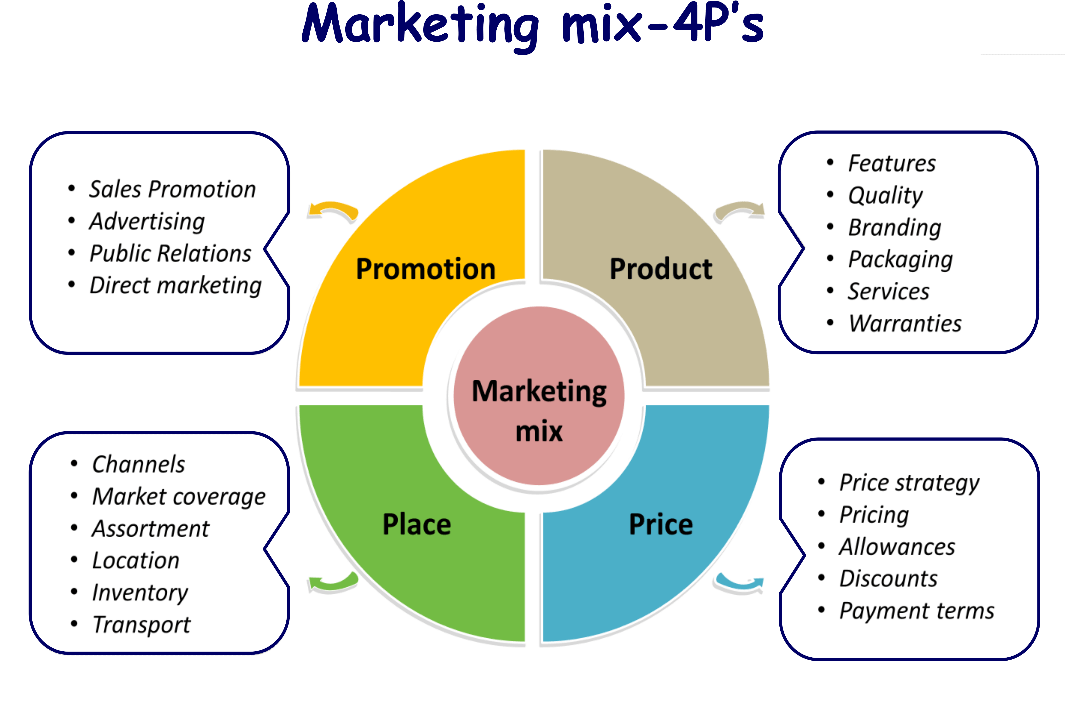
In conclusion, businesses must consider the marketing mix when creating their plans. A business can develop a thorough and successful marketing strategy that will assist it in achieving its marketing objectives by taking into account the four essential factors of product, pricing, promotion, and place. Target Audience and SegmentationFor designing effective strategies and attaining your objectives in marketing, segmentation and understanding your target audience are crucial. The set of people who are most likely to be interested in your product or service is known as a target audience. You may segment your audience more effectively by breaking up your target market into more focused groups based on their traits or behaviors. 
Determining your target audience is the first step in creating a successful marketing strategy. You must research and analyze behavioral, psychographic, and demographic data to identify your target customer. Age, gender, income, education level, and other relevant details that might help you understand the characteristics of your audience are included in demographic data. While behavioral data focuses on their behavior, psychographic data examine their values, interests, and way of life. You can start the segmentation process once you have a strong idea of your target audience. You can achieve this by separating your audience into smaller groups based on their shared qualities and distinctive characteristics. You can segment your audience in several ways, such as demographics, geography, psychographics, and behavior. By using demographic segmentation, you may divide your audience according to factors like age, gender, income, education level, and occupation. It can assist you in developing targeted advertising that is customized to the unique requirements and preferences of each group. Geographic segmentation involves dividing your audience based on their location. It can help you target your marketing efforts to specific regions or cities, which can be useful if you have a local business or are launching a new product in a specific market. You can categorize your audience psychologically by looking at their values, beliefs, hobbies, and lifestyles. This method can assist you in finding new growth chances as well as in developing targeted advertising that speaks to their demands and interests. Using behavioral segmentation, you may divide your audience according to their behavior, loyalty, purchase patterns, and product or service use. It might help you locate trends and patterns to improve your marketing approach and product or service. SWOT AnalysisA SWOT analysis is a framework used in strategic planning to determine and assess an organization's strengths, weaknesses, opportunities, and threats. It is a straightforward but powerful technique for examining a company's internal and external environments. It can offer insightful information about the organization's present state and potential for the future. 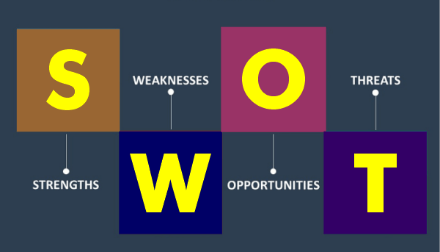
Before analyzing external opportunities and threats, the SWOT analysis starts by determining the organization's internal strengths and weaknesses. Analyzing the organization's resources, capabilities, and skills reveals its strengths and limitations. The external opportunities and threats are evaluated by looking at the external environment, which includes market trends, rivals, and regulatory changes. Finding the organization's strengths is the first stage in doing a SWOT analysis. Any element of the business that gives it an edge over rivals can fall under this category. Strong brand recognition, proprietary technology, a strong client base, and a skilled workforce are some strengths. The value of each strength to the company's success should be determined after the strengths have been identified. The next step is to identify the organization's weaknesses. Any element of the organization that hinders it compared to its rivals can fall under this category. Examples of weaknesses could be an outdated IT system, a lack of product diversification, or a high personnel turnover rate. The influence of each weakness on the organization's success should be considered when prioritizing them after they have been recognized. The external opportunities should be evaluated after the internal environment has been examined. It can apply to any element of the outside world that offers chances for development and achievement. Emerging markets, modifications to legislation that benefit the organization's goods or services, or joint ventures with other businesses are a few examples of opportunities. The opportunities should be prioritized depending on their potential influence on the organization's success after being identified. Finally, the organization's external dangers need to be identified. It can include any element of the outside world that could threaten the organization's existence. Examples of threats are increased competition, shifting consumer preferences, or economic decline. The possible influence of the threats on the organization's success should be considered when prioritizing them after they have been identified. After finishing the SWOT analysis, the next step is to use the knowledge you've obtained to create a strategic strategy. The organization's strengths and chances should be taken advantage of to the fullest extent possible. Its weaknesses and dangers should be dealt with to the greatest extent possible to reduce their negative effects. Creating a set of strategic goals that address the organization's threats and weaknesses while using its strengths and opportunities is one method to apply the SWOT analysis. For instance, if the SWOT analysis finds that the company's IT system is out-of-date and harming its ability to compete, a strategic goal might be to invest in a new, more effective, and economical IT system. Creating a set of marketing plans that use the organization's advantages and opportunities while addressing its disadvantages and threats is another approach to applying the SWOT analysis. For instance, if the SWOT analysis finds that the company has a solid reputation and a following of devoted customers, a marketing strategy might be to raise brand awareness through focused advertising efforts. In conclusion, the SWOT analysis is useful for examining an organization's internal and external environments. An organization's strengths, weaknesses, opportunities, and threats can be identified, and doing so can offer important insights into the organization's current situation and potential for the future. A strategic plan or marketing tactics addressing the organization's weaknesses and threats while leveraging its strengths and opportunities can be developed using the SWOT analysis. Marketing Research and Data AnalysisMarketing research and data analysis are critical components of any successful marketing strategy. Marketing research gathers and analyzes data to understand better consumer behavior and preferences, market trends, and competitor activity. Data analysis is the process of using statistical methods to interpret and draw insights from the collected data. 
The main goal of marketing research is to offer relevant data that can help with marketing decisions. Typically, the process starts with problem definition, followed by formulating research goals and a research plan. Numerous techniques can be used to gather data, including surveys, interviews, focus groups, and observation. The gathered data is then examined and interpreted to find trends, patterns, and connections that may offer insightful information. Marketing research can help businesses in many ways. It can help identify market opportunities, understand consumer behavior and preferences, and evaluate the effectiveness of marketing campaigns. For example, a business can use marketing research to identify the features and benefits customers value most in a product or service. This information can be used to develop products that better meet customer needs and preferences. Similarly, marketing research can help businesses identify the best channels for reaching their target audience and the most effective messaging and advertising strategies. Once data has been collected through marketing research, the next step is to analyze it. Data analysis is the process of using statistical methods to interpret and draw insights from the collected data. Data analysis aims to provide meaningful and actionable insights to inform marketing decisions. Data analysis techniques include inferential statistics, descriptive statistics, and data visualization. Data are summarised and described using descriptive statistics, such as the mean, median, and mode. Inferential statistics, like hypothesis testing and regression analysis, are employed to reach conclusions and make forecasts based on data. Data visualization techniques like graphs and charts can also be used to portray the data graphically and make it simpler to understand Analyzing marketing data can benefit businesses in a variety of ways. It can offer perceptions of consumer choices and behavior and the success of marketing initiatives. Data analysis, for instance, can assist a company in determining which marketing channels are generating the most traffic and revenue and which messaging and creative components connect with customers the most. The effectiveness of marketing initiatives can be increased and optimized using this information. In conclusion, any effective marketing strategy's foundation is a market research and data analysis. They offer insightful data on market trends, competitors' activity, and customer behavior and preferences. Businesses may identify market possibilities, create goods and services that better-fit customer wants, and maximize the success of marketing efforts with the help of marketing research and data analysis. Businesses can obtain a market advantage and accomplish their marketing objectives using these tools efficiently. Digital Marketing and Its Role in the Marketing MixDigital marketing promotes a brand, good, or service via digital platforms like websites, social media platforms, search engines, mobile applications, and email. As more individuals use digital devices and online platforms, the significance of digital marketing has grown significantly in recent years. The marketing mix, which consists of the four Ps: product, price, promotion, and place, now includes digital marketing as a crucial component. 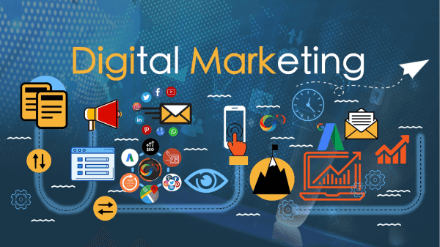
One of the four Ps of the marketing mix is promotion, which stands for advertisers' actions to interact with their target market. Because it enables businesses of all sizes to reach a wider audience, target particular consumer demographics, and assess the success of their campaigns, digital marketing has emerged as a crucial instrument for promotional purposes. There are many avenues available in digital marketing that can be used for advertising. For instance, social networking sites like Facebook, Twitter, and Instagram allow businesses to produce and share content with their followers, interact with clients, and increase brand recognition. Other significant digital marketing channels that may improve a brand's or product's visibility on search engines like Google or Bing include search engine optimization (SEO) and search engine marketing (SEM). The practice of sending marketing emails to a company's subscribers or clients is known as email marketing, which is a significant component of digital marketing. Email marketing is a cost-effective way to communicate with customers and promote products or services, and it can also be used to build customer loyalty and generate repeat business. The product and place aspects of the marketing mix also involve digital marketing. Digital channels can be used, for instance, to gather customer feedback and perform market research, both of which can be utilized to enhance goods and services. Digital channels can advertise goods or services to clients in various areas or focus on those who prefer to shop online. One of the biggest advantages of digital marketing is the ability to measure the effectiveness of campaigns. Digital marketing tools and platforms provide a wealth of data that can be used to track campaign performance, identify improvement areas, and optimize marketing strategies. For example, marketers can use website analytics tools to track website traffic, user behavior, and conversion rates, which can be used to improve the user experience and increase sales. In conclusion, digital marketing has established itself as a crucial component of the marketing mix by providing a range of platforms that may be utilized for advertising and product and place factors. Digital marketing enables businesses to target particular customer groups, reach a larger audience, and assess the success of their marketing initiatives. One of the biggest benefits of digital marketing is the ability to analyze and evaluate the effectiveness of marketing initiatives. Businesses that wish to remain competitive in the current digital economy must have this capability. Importance of Branding In MarketingGiving a business, product, or service a distinctive and identifiable personality is known as branding, and it is one of the most crucial marketing elements. A company's reputation, customer loyalty, and ability to leave a lasting impression on potential customers all depend heavily on its branding. 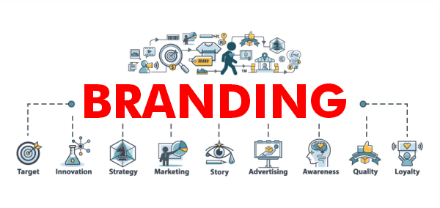
In conclusion, branding is essential to any marketing strategy since it helps establish a distinctive identity for firms, create brand equity, raise brand recognition, boost customer loyalty, support marketing initiatives, and promote employee engagement. By investing in branding, companies may leave a lasting impression on their target audience and succeed in business over the long run. Marketing CommunicationsMarketing communications is a vital part of any business strategy. It involves creating, delivering, and managing promotional messages that help to inform and persuade target audiences about the value and benefits of a particular product or service. In today's competitive marketplace, effective marketing communications can make all the difference between success and failure. 
The primary goals of marketing communications are to raise awareness of a good or service, stimulate interest, and increase sales. Advertising, public relations, direct marketing, personal selling, and digital marketing are just a few communication channels that can be used to accomplish this. Each channel has its strengths and weaknesses, and the choice of which to use will depend on the target audience, the message being communicated, and the available budget. One of the most popular types of marketing communication is advertising. It involves developing and distributing messages through various media, including TV, radio, newspapers, magazines, billboards, and online platforms. A new product can be promoted, a brand can be strengthened, or brand awareness can be raised through advertising. The message, the creative approach, the placement, and the frequency of exposure all affect how effective an advertisement is. An additional important component of marketing communications is public relations (PR). It involves establishing and sustaining connections with various stakeholders, including customers, partners, staff members, and the press. Press releases, media appearances, sponsorships, and participation in social media are all examples of PR activity. PR is crucial because it may be a successful method of managing a company's reputation and helps to build audiences' trust and credibility. Direct marketing involves communicating directly with individual customers through email, direct mail, and telemarketing. Direct marketing can be highly targeted, personalized, and cost-effective to generate leads and sales. Personal selling is a type of marketing communication that includes face-to-face interactions between salespeople and customers. It can occur in various places, including retail stores, trade shows, and in-home presentations. Personal selling can be a successful strategy for establishing customer relationships and closing deals, but it can also be costly and time-consuming. Digital marketing has become increasingly important in recent years as more and more people spend time online. Search engine optimization (SEO), social media marketing, content marketing, email marketing, and online advertising are just a few examples of the various activities that make up digital marketing. Digital marketing has the potential to reach big audiences while being highly targeted, measurable, and economical. It can also be complicated and constantly evolving, necessitating continuing expenditures on technology and training. Marketing communications must be unified and consistent across all platforms. It means that the message, tone, and communication style should be consistent regardless of whether advertising, public relations, direct marketing, personal selling, or digital marketing distribute a communication. Working with several departments or agencies inside the business is possible but requires careful preparation and coordination. One of the key challenges of marketing communications is to break through the clutter of competing messages and capture the attention of target audiences. It requires creativity and innovation in the message, the media, and the delivery. Marketers must understand their target audience's needs, interests, and preferences and create messages that resonate with them. Another challenge of marketing communications is to measure its effectiveness. It requires setting clear objectives and metrics and tracking the results over time. Metrics can include awareness, engagement, leads, sales, and ROI. The data collected can be used to refine the message, the media, and the delivery and to optimize the marketing communications strategy over time. In conclusion, marketing communications is a complex and dynamic field that plays a critical role in the success of any business. The Role of Customer Experience in MarketingThe customer experience has always been important to marketing. Still, it has grown much more recently as consumers have become more knowledgeable, connected, and empowered than ever before. Customer experience refers to the total of all interactions a customer has with a company, from initial awareness to post-purchase follow-up. It includes everything from website design and usability to product quality, customer service, and even the packaging and delivery of products. A positive customer experience can lead to increased loyalty, repeat business, and positive word-of-mouth recommendations, while a negative customer experience can have the opposite effect. In the past, marketing was often focused on one-way communication, where companies broadcast messages to customers through advertising and other promotional channels. The goal was to create awareness and generate interest in a product or service. However, in today's hyper-connected world, customers have more power than ever, and their expectations have changed. They expect more personalized and relevant experiences and quickly share their opinions online. As a result, marketing has evolved to focus more on two-way communication, where companies listen to customer feedback and use it to improve the customer experience. One way that companies can improve the customer experience is by creating a customer-centric culture. It means putting the customer at the center of all business decisions and designing products and services with their needs and preferences in mind. It can involve conducting customer research to gain insights into their behaviors, motivations, and pain points. By understanding the customer's journey and their touch points with the company, businesses can identify opportunities to improve the experience and create more loyal customers. Technology can also be used to enhance the consumer experience. The ability to gather and analyze client data, which can be utilized to create more individualized experiences, has never been simpler for organizations. For instance, e-commerce businesses can use the information on a customer's purchases and browsing habits to promote products and present customized incentives. Similarly, chatbots and other AI-driven tools can offer round-the-clock customer service and respond to frequently requested queries. Companies can enhance and personalize the client experience by offering first-rate customer service. It involves being available, accommodating, and respectful at all times. Also, it means making it simple for customers to contact the business when they have a query or issue. Businesses may develop a positive brand image and gain the trust of their customers by offering excellent customer service. Businesses may enhance the customer experience by asking clients for feedback in several ways. Surveys, social media, and other platforms can be used for this. Businesses can learn much about what they are doing well and where to improve by polling their customers. Changes that enhance the customer experience can then be made using this input. Positive customer experiences can have a significant impact on a business. For one, they can increase customer loyalty, leading to repeat business and increased revenue. They can also lead to positive word-of-mouth recommendations, which can attract new customers and help build brand awareness. In addition, positive customer experiences can help businesses differentiate themselves from competitors who may offer similar products or services. On the other hand, a firm may also suffer greatly from negative customer experiences. These may cause customer loss, in which clients stop using the product altogether or migrate to a competitor. Bad experiences can also result in bad word-of-mouth, which can impact a business's reputation and make it more difficult to attract new customers. Negative events might occasionally result in legal action or negative press coverage, which can have long-term effects on the business. The Impact of Technology on MarketingTechnology has revolutionized every aspect of our lives, including how we market and sell products and services. Technological advancements from social media to mobile devices have opened up new business opportunities to reach their target audience and drive sales. In this article, we will explore the impacts of technology on marketing. 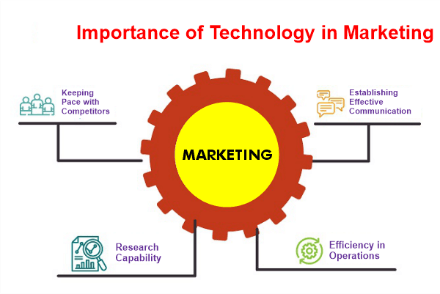
The wide-ranging effects of technology on marketing have given companies new ways to connect with and engage with consumers. Technology has provided businesses with all the tools they need to design successful marketing campaigns that increase sales and promote brand loyalty, from improved communication to personalized experiences and virtual reality. We may anticipate much more innovation in marketing as technology continues to advance. Global Marketing and Cultural DifferencesGlobal marketing is known for developing and implementing marketing strategies that target customers across various nations and cultures. Businesses are expanding their activities outside of their native markets as the world gets more interconnected to reach new customers and increase their revenues. However, global marketing has challenges, particularly in navigating cultural differences. 
A group or society's shared beliefs, values, practices, habits, and artifacts are called its culture. Culture affects how individuals see the world, think, communicate, and conduct themselves, and it can vary greatly from one nation to the other. As such, it is critical for businesses engaged in global marketing to understand the cultural differences in their target markets to avoid missteps and maximize the effectiveness of their marketing efforts. Impacts of Cultural Differences on Marketing
Businesses involved in worldwide marketing must establish a culturally sensitive strategy to respond to these difficulties. It calls for an awareness of the diverse cultural perspectives present in their target markets and respect for their target audience's specific viewpoints and preferences. One approach to cultural sensitivity is to partner with local experts and advisors who can provide insight into the cultural norms and preferences of the target market. Local experts can help businesses tailor their marketing messages, product design, packaging, and pricing strategies to better resonate with the cultural expectations of their target audience. Another strategy is to undertake market research to understand the cultural tastes and behavior of the target market better. Market research can help businesses by offering valuable information about consumer behavior, buying trends, and communication styles. Marketing Strategies and PlanningAny company that wants to create and keep a competitive advantage in the market must have marketing strategies and plans. Marketing planning is designing and implementing these plans to accomplish the company's marketing goals. A marketing strategy is a collection of decisions and activities a firm does to promote its products or services to a target audience. 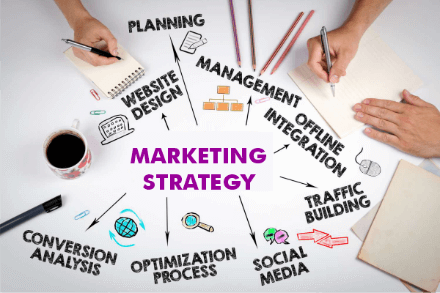
Effective marketing strategies and planning involve various activities, including market research, customer segmentation, product positioning, and promotion. Some of the key elements of marketing strategy and planning are:
Marketing Metrics and MeasurementsMarketing is an essential aspect of any business or organization and is vital to its growth and success. However, just like any other business function, it must be monitored, analyzed, and optimized to achieve its intended results. That's where marketing metrics and measurement come into play. The data points used to assess the success of a company's marketing efforts are known as marketing metrics. They can be used to evaluate various marketing-related factors, including the effectiveness of a specific campaign or marketing strategy. The ability to support organizations in making data-driven decisions, identifying areas for development, and modifying their marketing strategy as necessary makes marketing metrics and measurement important. The most popular marketing metrics and their applications are listed below:
While the above marketing metrics are important, it's essential to understand that not all metrics are relevant to every business or marketing campaign. Businesses should focus on the metrics most relevant to their goals and objectives. Businesses must set up measurement and reporting systems that collect data from several channels, including social media, email, and website analytics, to measure marketing KPIs successfully. They should regularly evaluate and analyze the data to intelligently decide on their marketing tactics. Furthermore, it's critical to guarantee the consistency and accuracy of the gathered data. Businesses should set up transparent data collection procedures and employ dependable data sources . to guarantee the accuracy of the data. The Future of Marketing and Emerging TrendsSince the invention of the Internet, marketing has advanced significantly and is still progressing quickly. Marketing tactics must change to keep up with the evolving environment as new technologies are developed. We will examine some of the newest marketing trends and the direction of the sector below:
Overall, the future of marketing is exciting and full of possibilities. As new technologies emerge and consumer behavior continues to evolve, marketers must be agile and adaptable to stay ahead of the curve. By embracing emerging trends and focusing on the customer experience, brands can build strong customer relationships and stay competitive in a rapidly changing world.
Next TopicPeptic Ulcer Definition
|
 For Videos Join Our Youtube Channel: Join Now
For Videos Join Our Youtube Channel: Join Now
Feedback
- Send your Feedback to [email protected]
Help Others, Please Share










